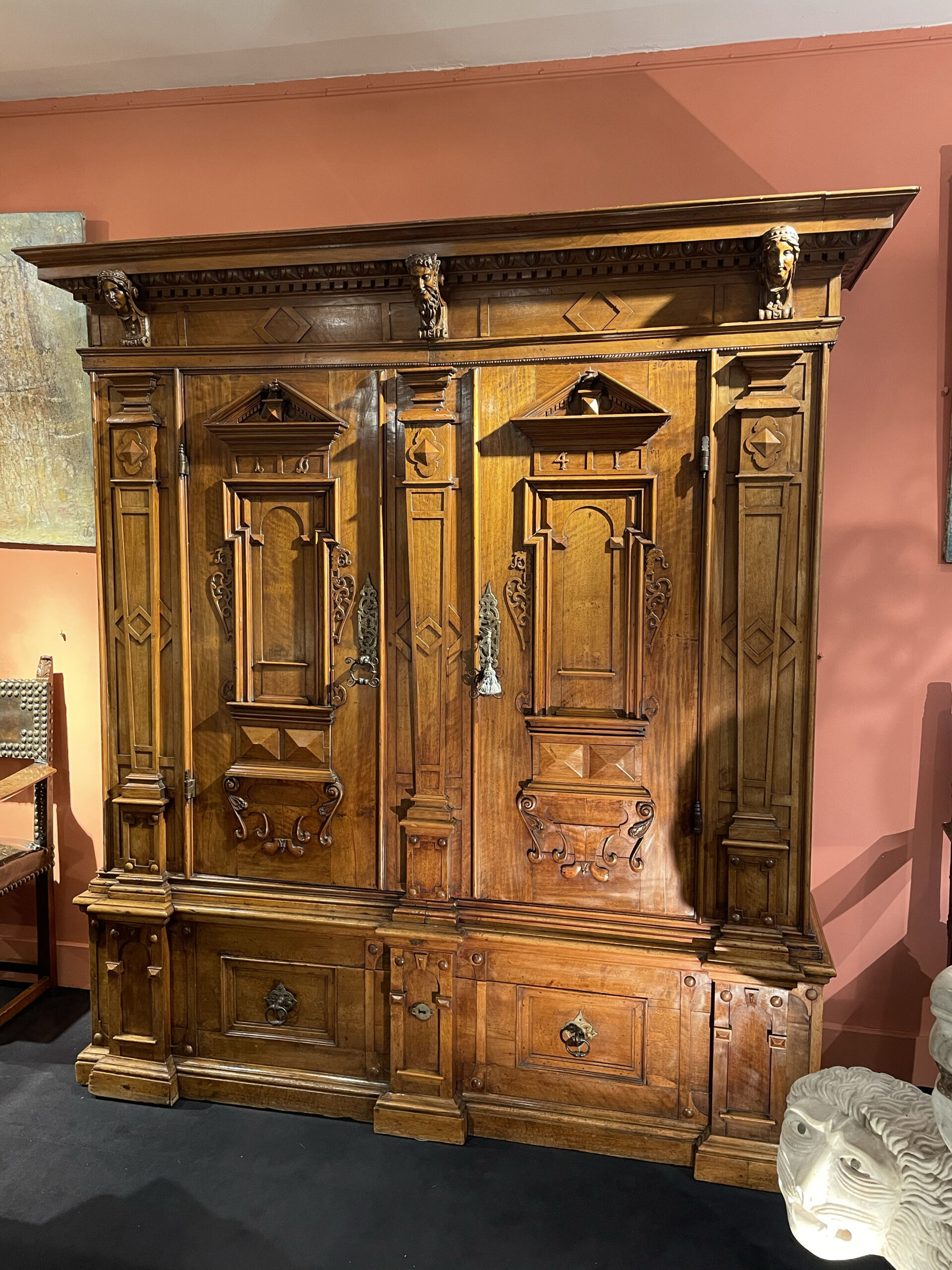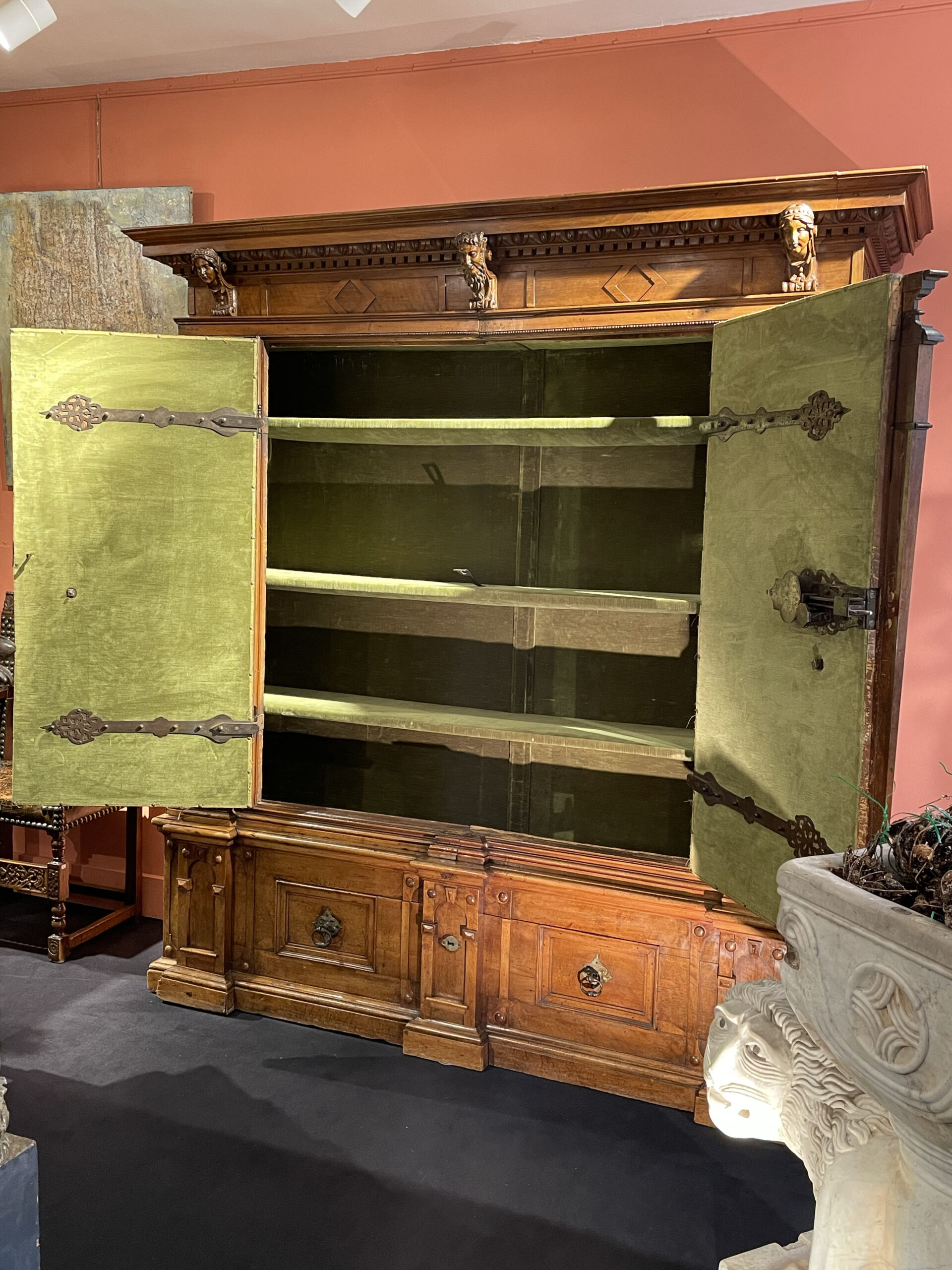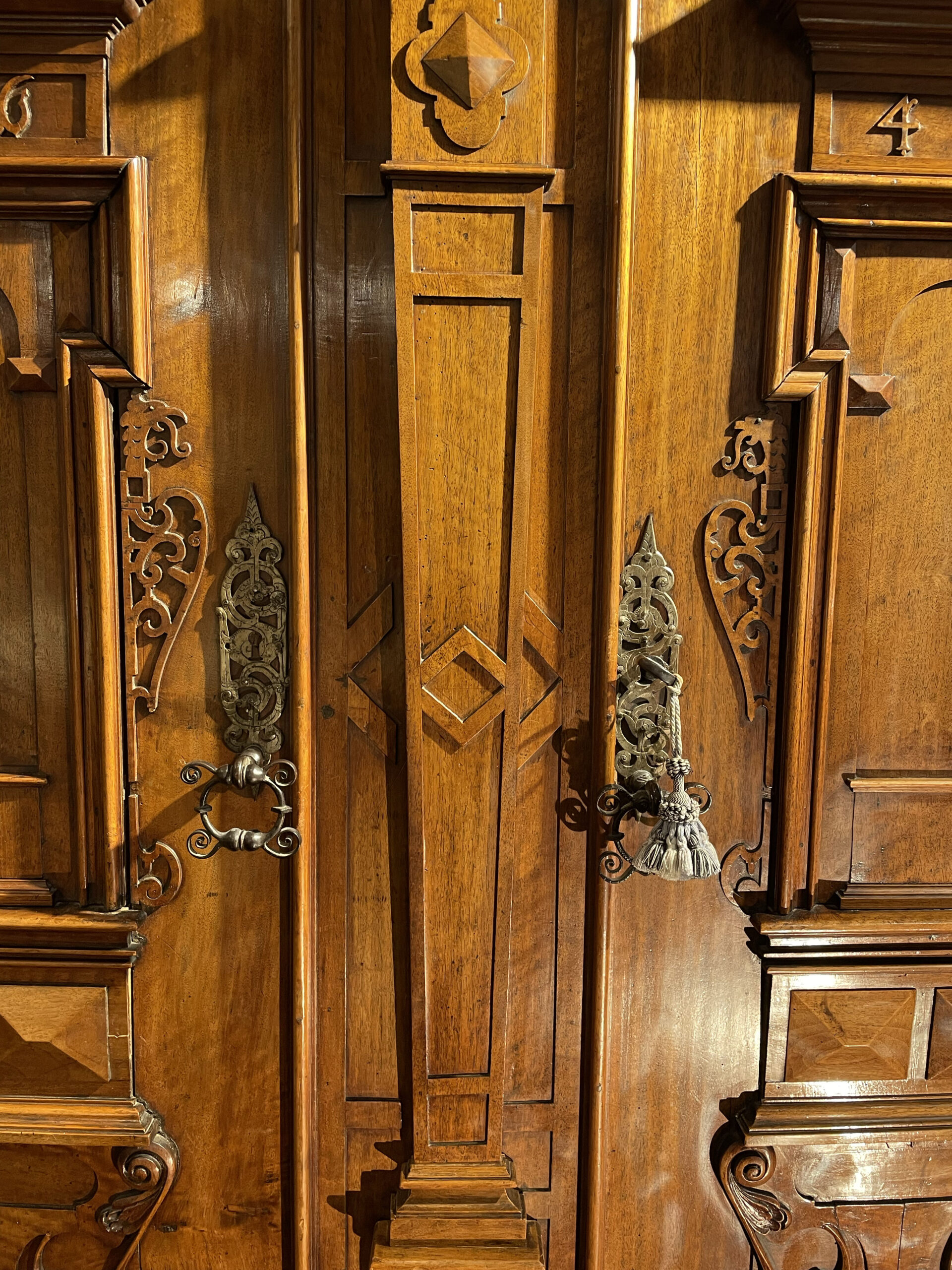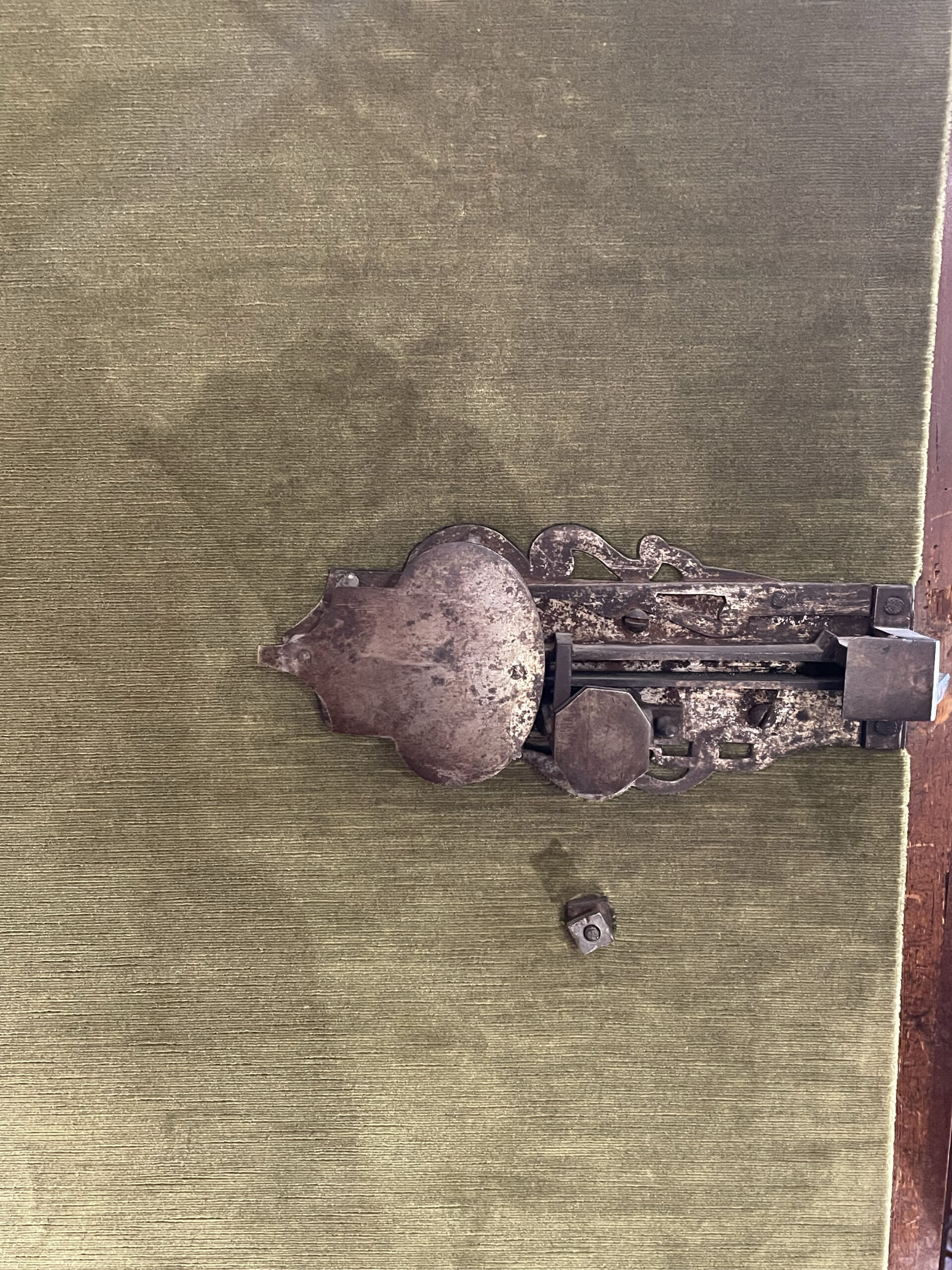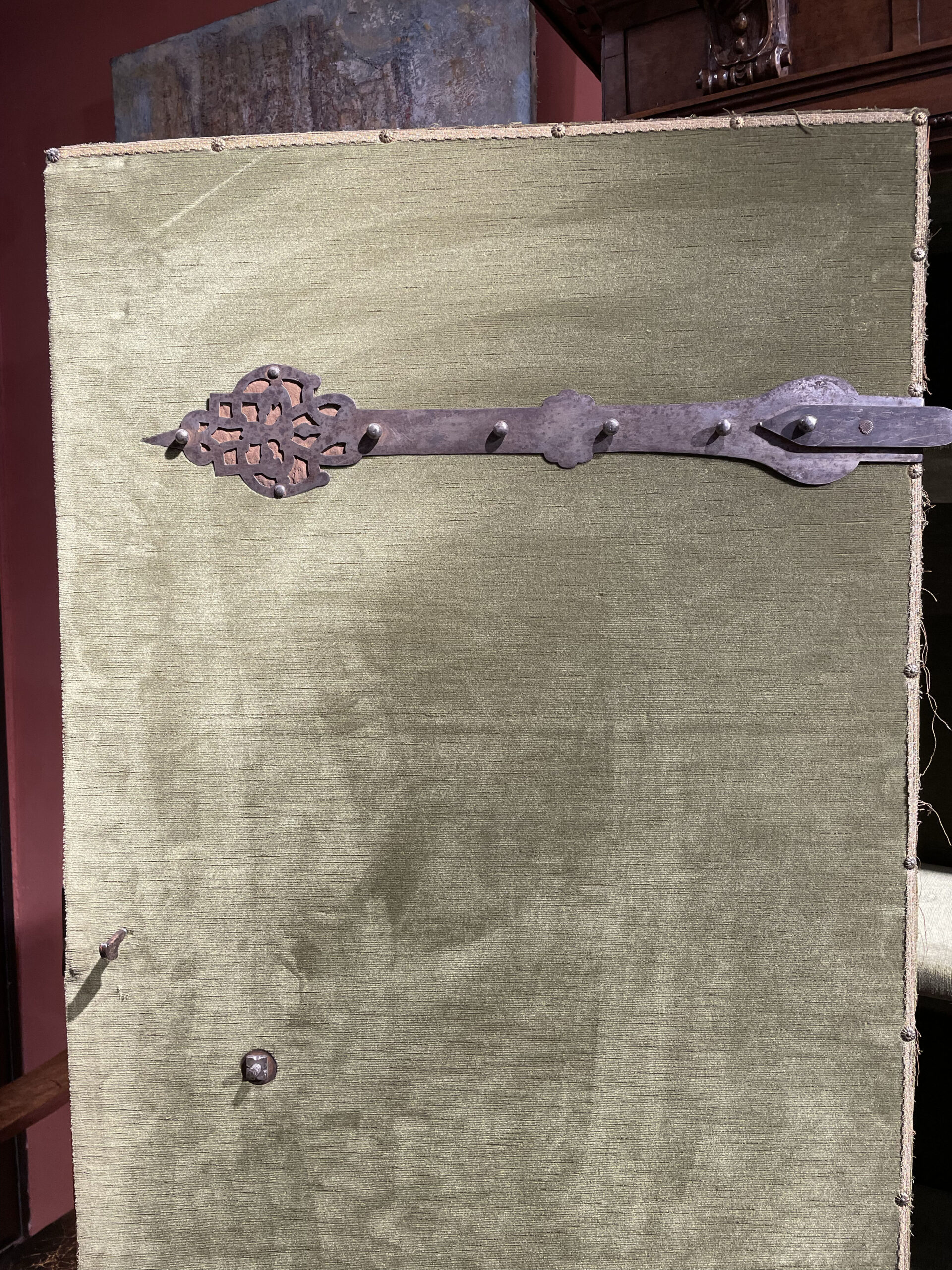Description
History
The production of large cabinets was divided between Germany, Switzerland and Alsace between the 16th and early 17th centuries. They obeyed strict rules governing both the proportions and the decoration. This piece of furniture with its imposing dimensions and rich decoration illustrates the skills of local craftsmen. This piece furnished bourgeois residences and allowed its owner to show off his wealth.
The structure of these cabinets evolves over time.
From the middle of the 16th century, the rediscovery of ancient architecture, notably through the works of Vitruvius, had a major impact on furniture.
From then on, architecture became a model for the art of furniture making and became a model for carpenters who consciously applied its rules. A kind of reduced architecture, the facades of German cabinets are then punctuated with columns or pilasters, topped with cornices and decorated with windows topped with a pediment or niches.
The perfection of the architecture is complemented by a sober decoration with balanced forms. The adoption of this new style was not, however, to the detriment of local traditions and the borrowing of its Italian components remained influenced by Germanic contributions. This contributes to the creation of a singular art form.
The cabinets made then generally consist of two pieces superimposed on a base and topped by a cornice.
However, at the beginning of the Thirty Years’ War (1618-1648), another type of cabinet obtained the favor of the cabinetmakers. This one has a single body of furniture, opening with two door-leaves. It marks the completion of the typological evolution of Germanic furniture started in the sixteenth century. It is generally referred to as Halber Kestern, i.e. “half a cabinet”. Its assembly illustrates the Germanic traditions.
It consists of three parts (base, body and cornice) in the height direction. The two parts are assembled with a tongue and groove joint. The boards that form the ceiling and the floor of the formwork are also of two parts joined in the axis of the back break. The whole is consolidated by a system of tenons and mortises locked by a wedge or wooden key. Thanks to this process, the wood can move without damaging the structure of the furniture, thus ensuring its longevity.
It puts the emphasis on the architecture. The rigor of the structure is accompanied by a decor in which every detail participates in the architecture.
Description
The cabinet displayed here is one of these Halber Kastern. Composed of a single body with two doors, it rests on a base where a drawer is housed, while a very slightly overhanging cornice crowns it.
The façade is punctuated by three shallowly projecting pilasters decorated with geometric shapes.
The leaves are decorated with a semi-circular arcature, blind and surrounded by a moulded frame. On either side, the frame is flanked by two highly stylised sphinxes, formed by sinuous flattened scrolls.The base is composed of two diamond points placed on a plant scroll illustrating in a particularly discreet way the auricular style which was very popular with artists at the time.
Lastly, the bays are covered with a lintel bearing a date -1641- and an interrupted triangular pediment.
The cabinet is crowned by a slightly overhanging cornice supported by three consoles masterfully carved with male faces in the centre and female faces on either side.
The locks and hinges have been richly engraved, perfecting the remarkable decoration of this piece of furniture.
This wardrobe appears to be the pure product of 17th century Germanic craftsmanship. The decoration, all in balance and restraint, delicately accompanies the architectural lines of the cabinet’s structure.
The artists favoured large, smooth surfaces made of a single type of wood, which helped create an impression of monumentality. The emphasis is on the harmony of tones, shapes and proportions.
Literature
LÉVY-COBLENTZ Françoise, L’art du meuble en Alsace, Tome 1, du Gothique au Baroque, 1480-1698, Librairie Istra et Editions des dernières nouvelles d’Alsace, 1975

